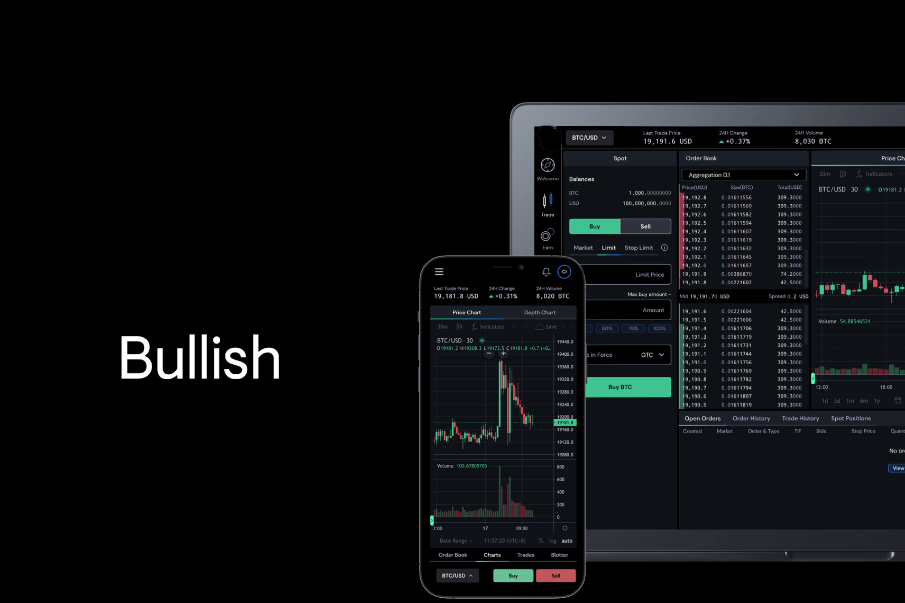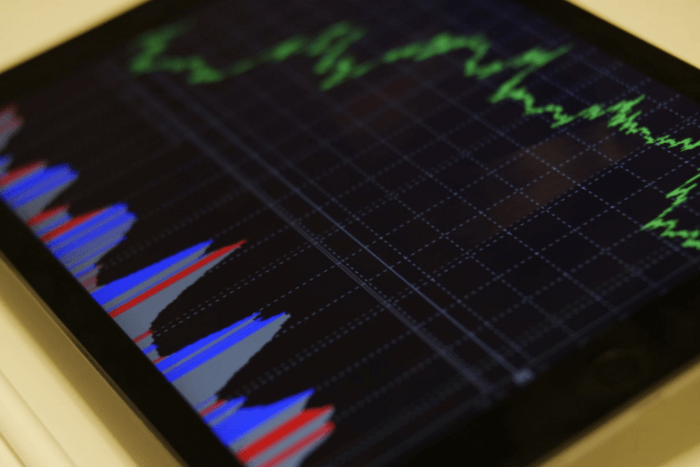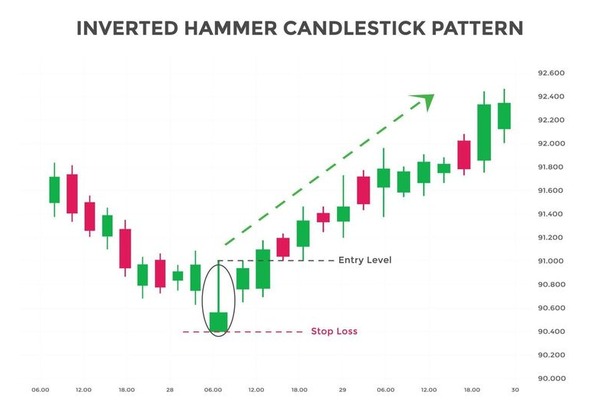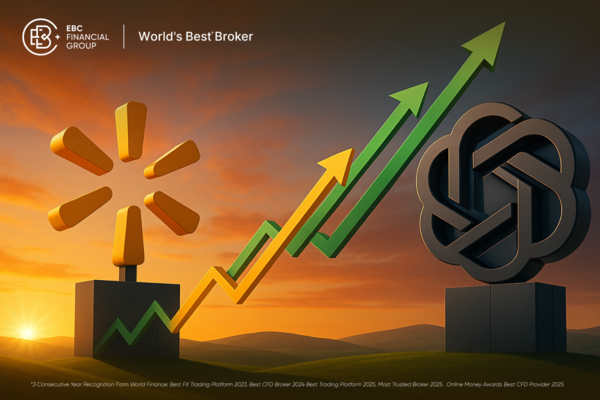Technical analysis offers various Chart Patterns that help traders identify favourable entry and exit opportunities. Among the bearish reversal patterns, the Inverted Cup and Handle stands out for its reliability and clarity.
This pattern often signals the end of an uptrend and the potential start of a new downtrend, making it especially useful for short sellers and conservative traders seeking reversal setups.
In this guide, we will break down what the inverted cup and handle pattern is, how to identify it, the strategies to trade it effectively, and provide real-world examples to demonstrate its use in various markets.
What Is the Inverted Cup and Handle Pattern?
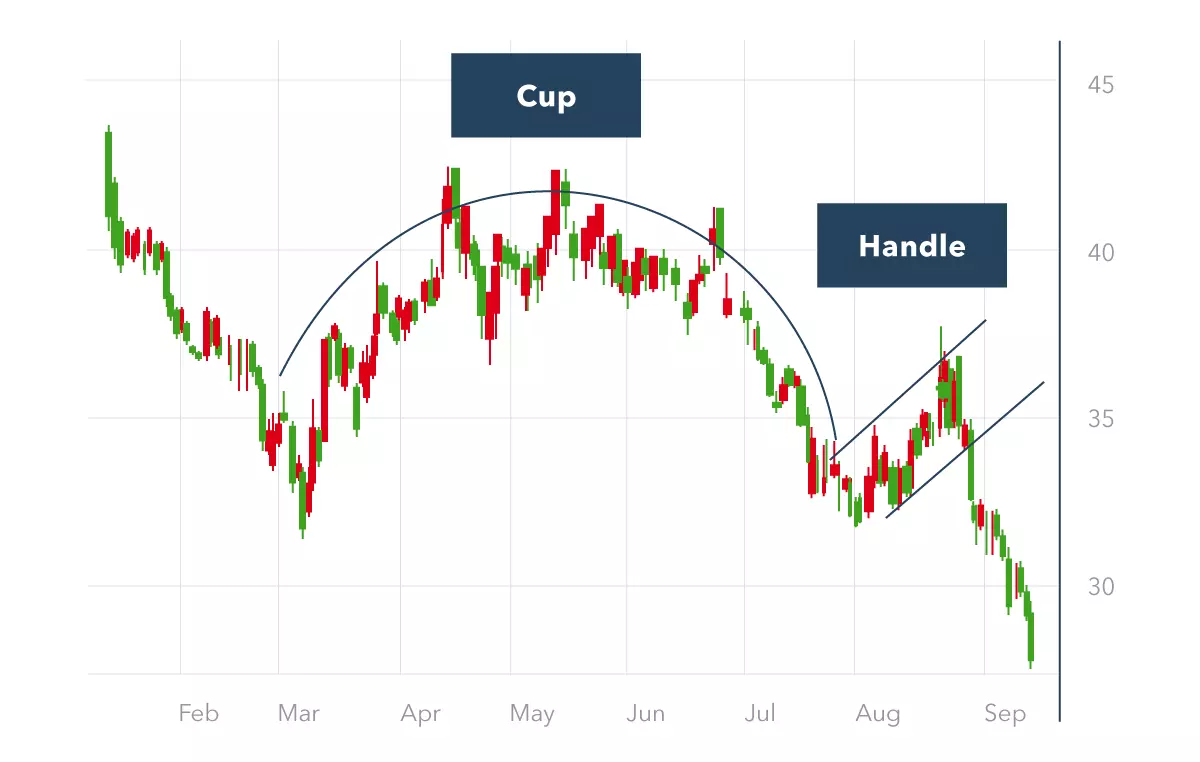
The inverted cup and handle is a bearish reversal pattern that typically forms after a sustained upward trend. It resembles the traditional "cup and handle" pattern, but upside down.
The pattern begins with a rounded top that mimics the shape of an upside-down cup, followed by a slight upward or sideways consolidation phase—the handle. Once the price breaks below the lower support line of the handle, it typically leads to a sharp downward move, confirming the reversal.
This pattern is commonly seen in stock, forex, and commodity charts and is used by traders to anticipate a trend reversal from bullish to bearish.
Anatomy
The Inverted Cup
It is the first and most prominent section of the pattern. It forms when a previously bullish price action starts to lose momentum and gradually turns downward, becoming a rounded arch or "upside-down U." This signals growing bearish sentiment and waning buyer interest.
The inverted cup indicates the shift from bullish control to neutral, as the price relinquishes its upward momentum.
The Handle
After the inverted cup is formed, the price typically consolidates in a short-term upward or sideways trend. It forms the handle, which is a minor retracement or a flag-like structure.
This phase may deceive some traders into believing the bullish trend is returning. However, it's often a final bull trap before a significant price breakdown.
Once the price breaks the support level at the bottom of the handle, the pattern is considered complete.
How to Identify
Spotting this pattern in real time requires patience and chart-reading skills. Here's what to look for:
Prior Uptrend: The pattern should emerge following a distinct upward trend. Without a prior bullish move, the reversal signal is less meaningful.
Rounded Top: The inverted cup should be smooth and curved, indicating a gradual shift in market sentiment.
Handle Formation: After the rounded top, a short-lived consolidation or upward retracement forms the handle.
Support Line: Draw a horizontal line along the lowest point of the handle. It acts as the neckline.
Breakout Confirmation: Once the price breaks below the support line with volume, the pattern is validated, signalling a potential shorting opportunity.
Timeframes can vary, but this pattern is most reliable on daily or weekly charts, especially in highly liquid instruments.
Inverted Cup and Handle vs Regular Cup and Handle
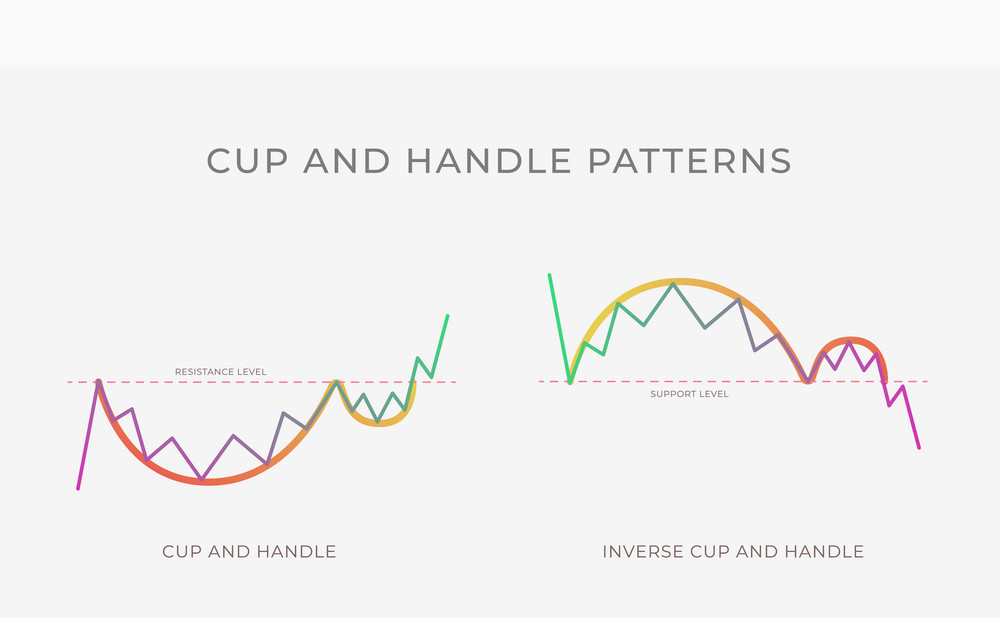
While both patterns share a similar structure, they predict opposite market directions. The regular cup and handle is a bullish continuation pattern, while the inverted version is a bearish reversal pattern.
In the regular pattern:
The cup resembles a "U" shape (not a sharp "V")
The handle is a minor downward correction
A breakout above resistance confirms bullish continuation
In the inverted pattern:
The cup has a rounded top, like an upside-down "U"
The handle is a minor upward correction
A breakdown below support confirms a bearish reversal
How to Trade the Inverted Cup and Handle Pattern
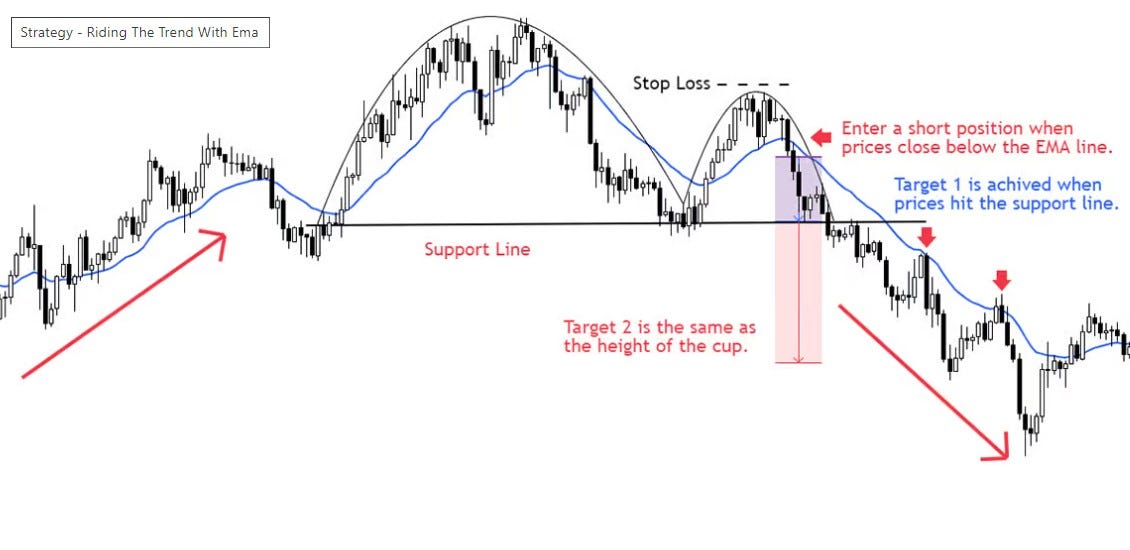
Step 1: Identify the Pattern
Watch for the inverted cup with a minor upward pullback creating the handle. Confirm that it appears after a noticeable uptrend.
Step 2: Wait for the Breakdown
Don't rush into the trade during the formation phase. Wait for the price to break below the support level that marks the base of the handle. This breakdown often signals increased selling pressure.
Step 3: Enter the Trade
After validating the breakdown with significant volume, you may initiate a short position just under the support level. Some traders wait for a minor pullback to retest the broken support as resistance before entering.
Step 4: Set Stop Loss
A good place to set your stop loss is just above the handle or slightly above the cup's peak if you prefer a looser stop. It protects your position if the pattern fails and the price rebounds.
Step 5: Set Profit Target
Measure the distance from the top of the inverted cup to the support line (neckline). Subtract this distance from the breakout point to get your profit target.
For example, if the inverted cup is 10 points tall and the support is at 150, the target price would be 140.
Real Market Examples
Example 1: stock market (Daily Chart)
In early 2022, a popular tech stock such as Zoom Video (ZM) formed an inverted cup and handle after a prolonged rally during the pandemic. The pattern began forming a rounded top around $360, followed by a minor retracement (handle) to $320.
Once the price broke below $300, the sell-off accelerated, validating the pattern and triggering a bearish move toward $250.
Example 2: Forex Market (EUR/USD Pair)
On a daily chart of the EUR/USD pair, traders observed an inverted cup and handle formation between 1.1800 and 1.1600. After a failed breakout attempt, the pair retraced to 1.1650 (handle).
A decisive breakdown below 1.1600 confirmed the pattern, resulting in a 200-pip move downward.
Tips for Beginners to Succeed
If you're new to this pattern, consider the following tips:
Start by observing past chart examples on different instruments.
Practice identifying the pattern using demo accounts.
Wait for confirmed breakouts before trading live capital.
Don't ignore risk management and use stop losses without exception.
Consider using volume and momentum indicators for extra confirmation.
Patience and discipline are key. Don't try to force the pattern on every chart you analyse.
Conclusion
In conclusion, the inverted cup and handle is a powerful bearish reversal pattern that can offer valuable insights into market sentiment and future price movement. When identified correctly, it provides a structured approach to short selling or hedging during downturns.
As always, combine technical patterns with broader analysis, remain patient, and adapt your strategy based on evolving market conditions.
Disclaimer: This material is for general information purposes only and is not intended as (and should not be considered to be) financial, investment or other advice on which reliance should be placed. No opinion given in the material constitutes a recommendation by EBC or the author that any particular investment, security, transaction or investment strategy is suitable for any specific person.









